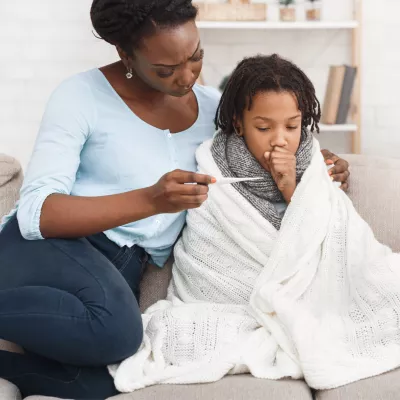- AdventHealth Centra Care

Talk about uncomfortable! What’s Going Around this week causes itching, oozing and more itching. Contact dermatitis is a condition in which the skin becomes red, sore, or inflamed after direct contact with a substance and AdventHealth Centra Care physicians have been seeing case numbers increase two weeks in a row.
There are two kinds of contact dermatitis: allergic and irritant. With more people outdoors during the summer and kids playing at camp, it's not a surprise that allergic contact dermatitis is what is going around.
Allergic contact dermatitis is caused by exposure to that which you have become allergic. Something like the metal in an earring, topical antibiotics or… Poison Oak or Poison Ivy. Most people are sensitive to the plants' oily sap. If it gets on your skin, it causes a blistering skin rash. The rash can range from mild to severe, depending on how much sap gets on your skin and how sensitive you are to it. The result is typically an itching, red rash with bumps or blisters.
Irritant contact dermatitis is caused by contact with substances like detergents, pesticides or other chemicals. The reaction usually looks like a burn.
Symptoms and Treatment
Lookout for:
- Extreme itching
- Red, streaky, patchy rash where the plant touched the skin
- Red bumps, which may form large blisters
What to do:
- Wash the skin thoroughly with soap and warm water. Because the plant oil enters skin quickly, try to wash it off within 30 minutes.
- Scrub under the fingernails with a brush to prevent the plant oil from spreading to other parts of the body.
- Wash clothing and shoes with soap and hot water. The plant oils can linger on them.
- Immediately bathe animals to remove the oils from their fur.
- Body heat and sweating can aggravate the itching. Stay cool and apply cool compresses to your skin.
- Calamine lotion and hydrocortisone cream can be applied to the skin to reduce itching and blistering.
- Bathing in lukewarm water with an oatmeal bath product, available in drugstores, may soothe itchy skin.
- If creams, lotions, or bathing do not stop the itching, antihistamines may be helpful.
The reaction can vary from mild to severe. In rare cases, the person is admitted to a hospital. The worst symptoms are often seen during days 4 to 7. The rash may last for 1 to 3 weeks. Head to the closest Centra Care location if the itching is severe and cannot be controlled or if the rash shows signs of infection. Call 911 or go to an emergency room if the person is suffering a severe allergic reaction, such as swelling or difficulty breathing.



